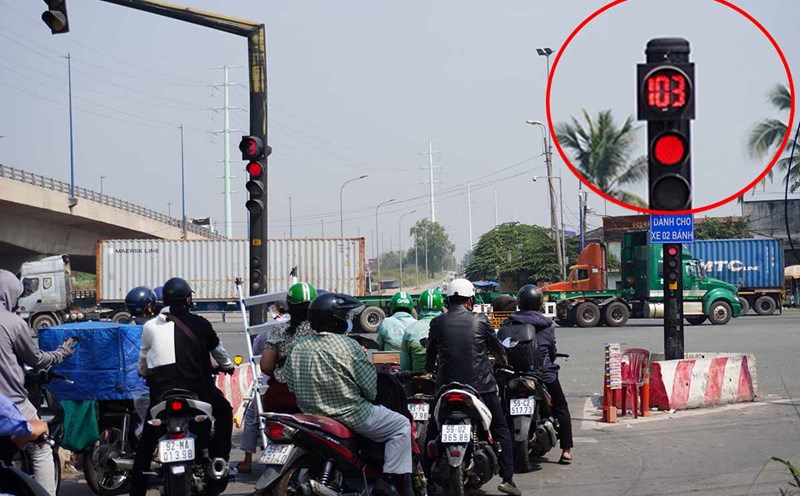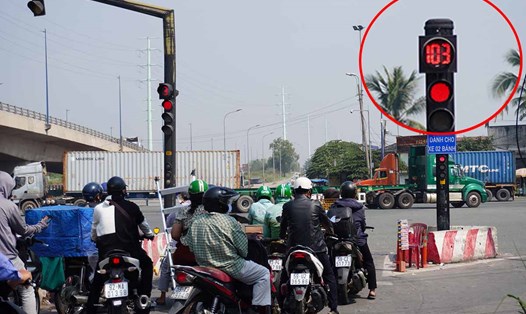The yellow light incident occurred at noon on January 8 at the intersection of 30/4 Street and De Tham Street. The yellow light kept flashing but did not turn red as usual. Drivers knew the traffic light was broken, but no one dared to drive, causing traffic jams.
Driver Tu Van Hai said: “I would rather stop and endure traffic jams, because a driver’s salary is only 6-7 million VND/month, while running a yellow light will result in a fine of 18-20 million VND. I can’t afford to pay the fine, and I also lose points on my driver’s license, so it’s very stressful.”
Not just one, but many drivers accept waiting at the yellow light for 30 minutes, rather than losing 18 - 20 million VND.
In the past few days, there have been many traffic light incidents affecting traffic in many localities. Typically, at some major intersections in Ho Chi Minh City, the red light lasts more than 100 seconds, while the green light only lasts 20 seconds.
In many situations, even though they know the traffic light is broken, drivers are forced to wait because they have no other choice. It is good that people follow the rules, but they are very frustrated because they have to waste time due to traffic light problems.
Many opinions have been raised that management agencies need to study and organize traffic appropriately and scientifically, creating conditions for people to travel easily. At intersections with good infrastructure, motorbikes should be allowed to turn right when the light is red to quickly clear the traffic congestion. There are intersections that can allow cars to turn right, such as at the Le Duan intersection turning to Ton Duc Thang in Ho Chi Minh City.
When Decree 168 was applied, the majority of people strictly complied, but the traffic infrastructure did not support convenient travel and needed to be adjusted promptly.
Traffic laws are enacted to help people travel safely and conveniently, but traffic organization and infrastructure must be "in sync" with the law for effective application in life.











